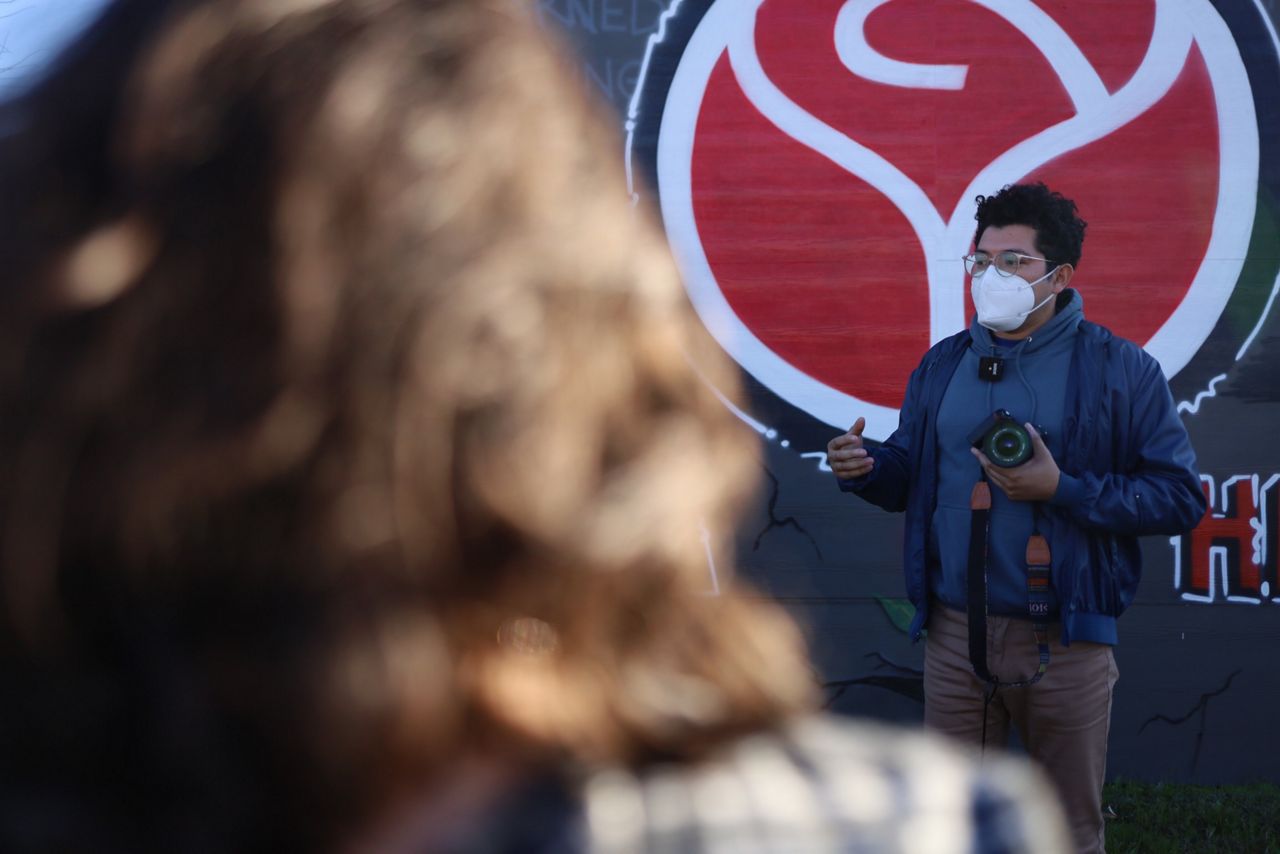SAN ANTONIO — Francisco Cortes has open dialogue with his middle school-aged students about issues going on in the world. On a recent Wednesday he was having a conversation about the deadly riot that took place at the U.S. Capitol.
“If you have kids they’ll be learning about this, grandkids they’ll be learning about this,” Cortes says.
During the day Cortes teaches social studies at Booker T. Washington Elementary on San Antonio’s East Side.
However, after school, he runs a photography program called the Light Catchers Society, along with the help of nonprofit SA Heals. It’s not a typical photography program, it’s an outlet that allows his students to capture issues that plague their community.
“These are issues that affect the students on a day-to-day basis, institutionalized racism, inequalities in education, living in a neighborhood that’s been marginalized,” Cortes says.
Cortes says his students will be able to speak up for themselves when it comes to these issues, but also avoid pitfalls along their journeys.
Alfredo, a student, has been a part of the Light Catchers for the last three years and has seen his own and his classmates’ photos get sold in art galleries. He doesn’t speak like a normal teenager.

“We experience it every day, we see it around us, we walk around, we take a bus, we get driven to school, and see it around us every day. If you were born on the East Side, then you know what’s happening,” Alfredo says.
Alfredo understands that what he sees is a sign of gentrification.
“It feels bad, cause you’re seeing a community fall apart now, when you are pushing out the people that lived here [for]a very long time,” Alfredo says.
Cortes knows the stigma that exists on the East Side, which is why he wants his students to reclaim their stories.
“I know that the photography that they are doing has an amazing message behind it, which makes it more powerful,” Cortes says.
Cortes spent the bulk of 2020 strategizing and thinking of ways to keep this vital program alive while still keeping his students safe.
“It may not look exactly the same as previous years. It may be smaller groups to be safer, especially as time went by and we realized the pandemic is not a short-term problem,” Cortes says. “We saw the way it’s affected the students so we just had to do something.”



